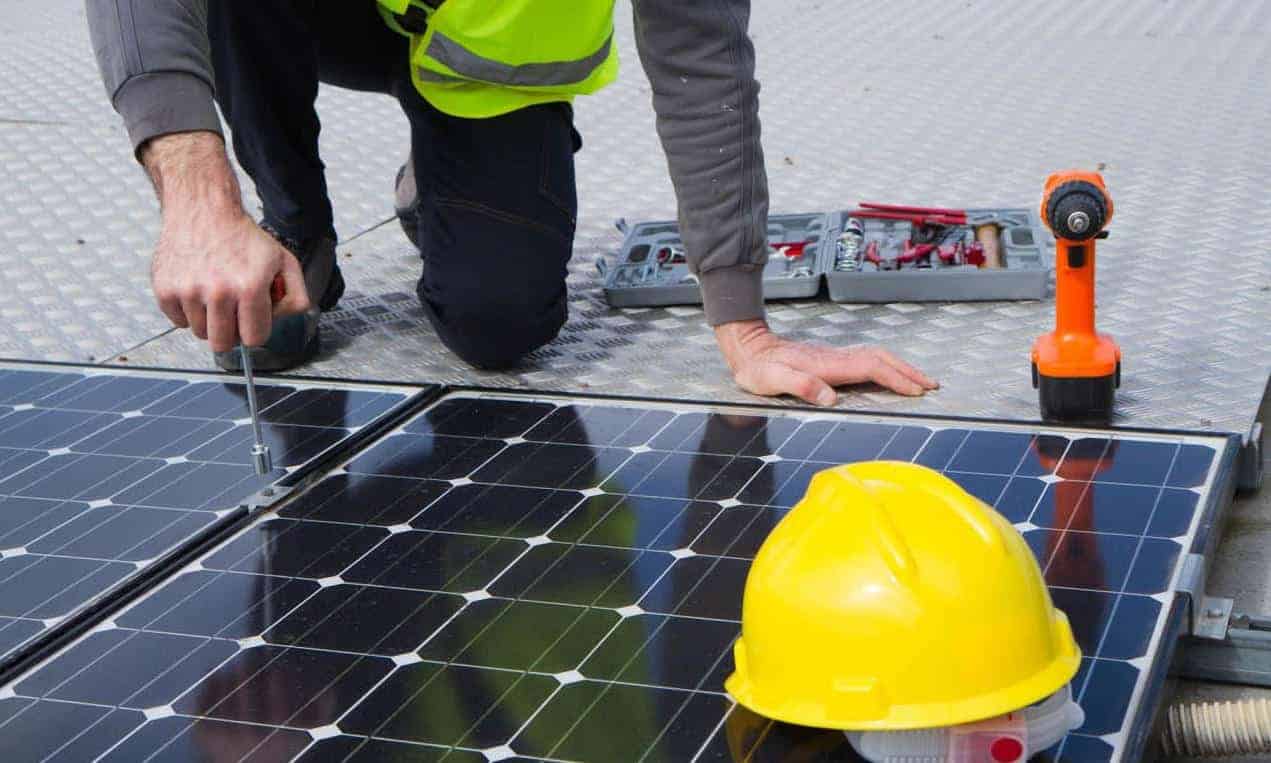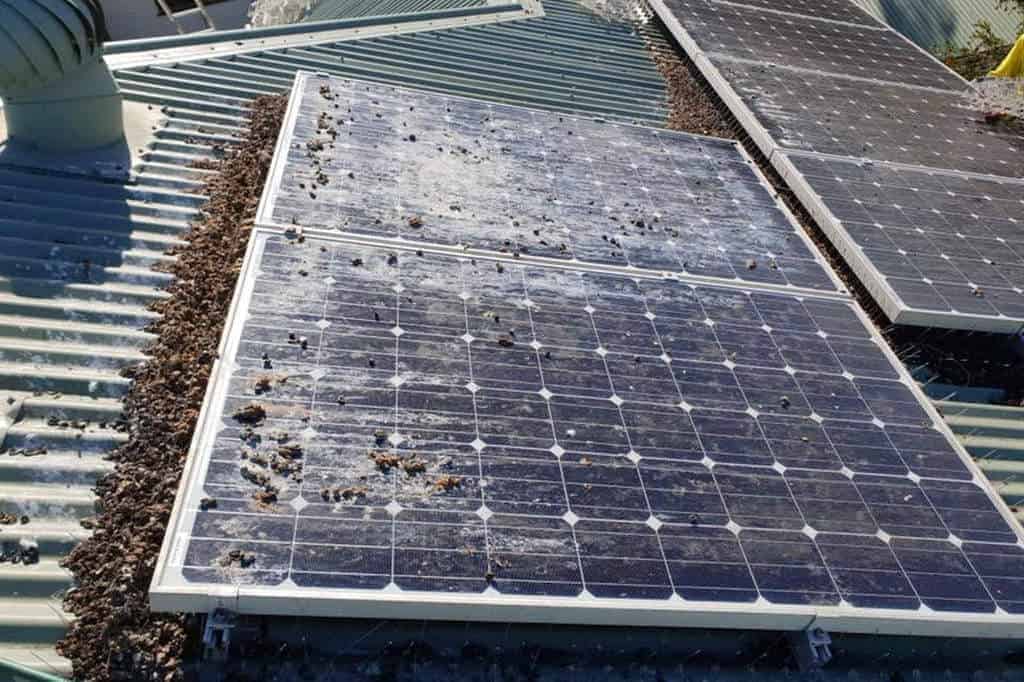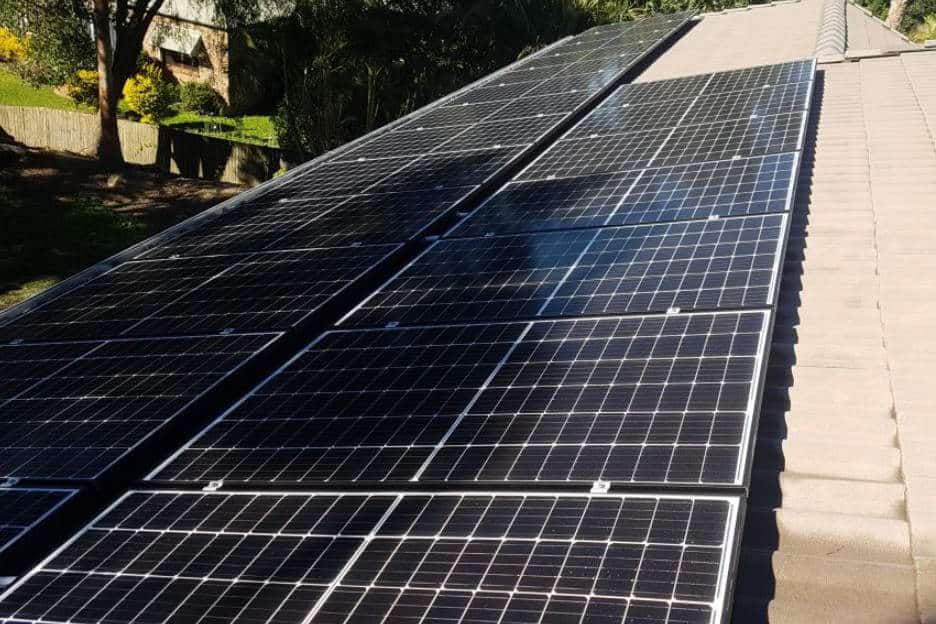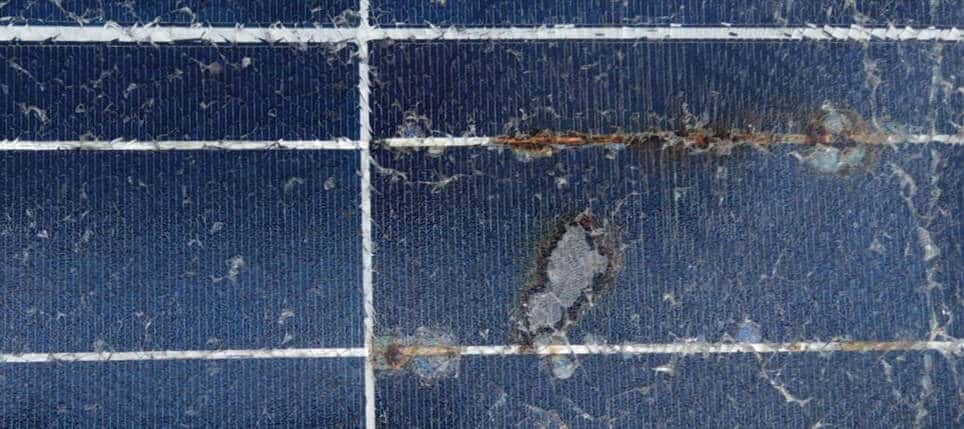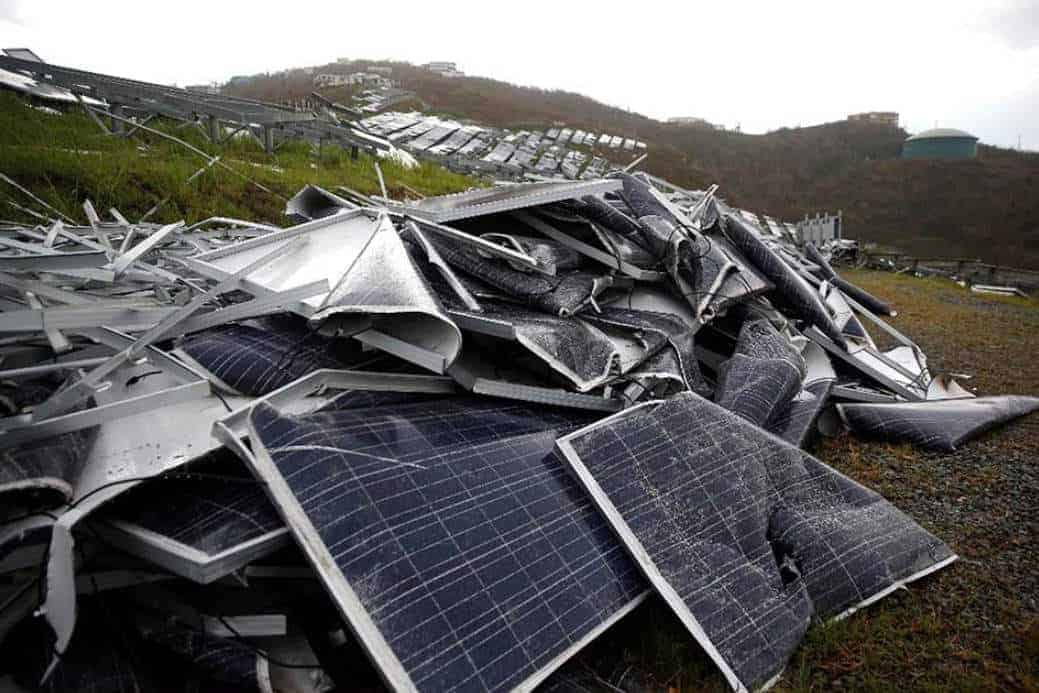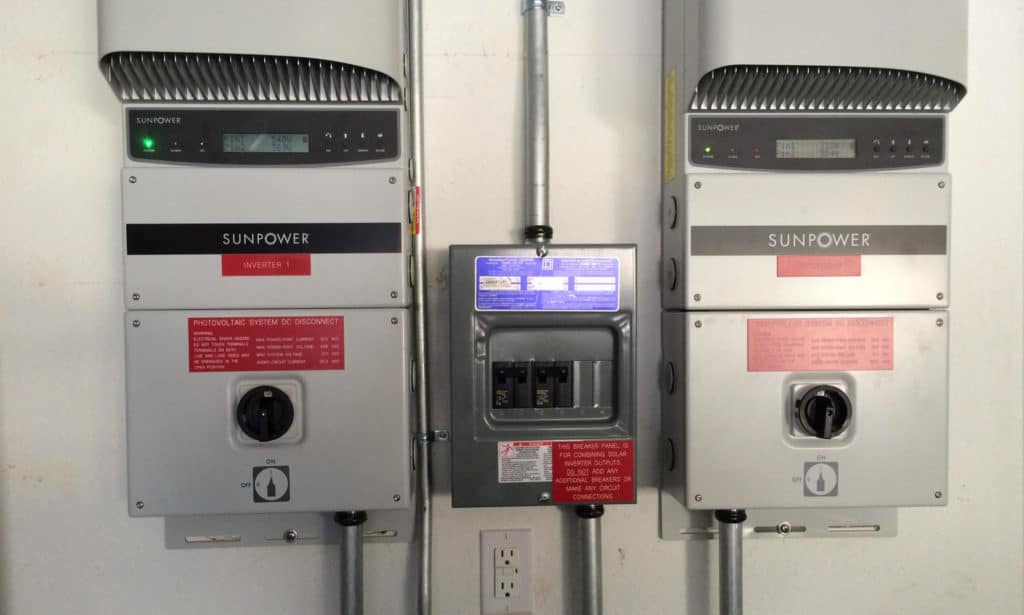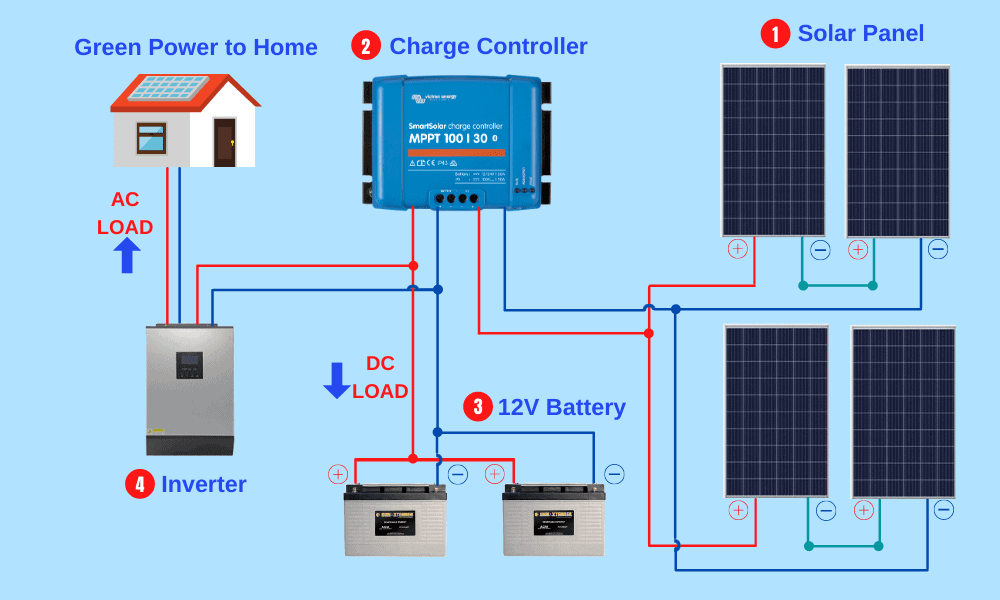What can I say about solar energy that hasn’t been said before? It is renewable and sustainable, and we get it for free. Sure, solar equipment is not cheap, but nobody charges you for the sun. Solar energy is also green and environmentally friendly.
Solar panels are really a marvel of human ingenuity. But with everything that has an advantage, there’s a devastating list of disadvantages. How about solar panels? What common issues plague solar panels?
After some investigation, we found the common issues associated with solar panels. Join us as we discuss these solar panel problems, plus effective measures you can take to prevent, identify, and solve these issues.
So, without further ado, here are six common solar panel problems.
1. Dust and Dirt Accumulation
It is easy to forget that solar panels are outdoor appliances. This could be because once we install them on the roof, we forget about them. Out of sight, am I right?
Much like your roof, solar panels accumulate dust, dirt, and filth over time. The problem is that these unwanted debris coatings interfere with or block the sun’s rays, lowering your solar panels’ power generation potential and efficiency.
When your solar panels are underperforming, you may be compelled to pull power from the grid or run the old-fashioned gasoline generator. Before you know it, you’re spending more on electricity and polluting the environment.
Yet all this could be prevented.
Solution: Dust and Dirt Accumulation
You can discourage pigeons from vandalizing your solar panels, but you cannot persuade dust, dirt, leaves, snow, moss, and algae from setting up shop on your solar panel. For these kinds of problems, you have to deal with the issue after the fact.
And the best solution is regularly cleaning your solar panels. You can either hire a professional or grab a ladder and DIY it. Here’s a 6-step breakdown on how to clean your solar panels.
Prevention: Dirt and Dust Accumulation
Algae and moss grow due to high humidity, and you can’t stop that. Same way, you can’t stop dust. But there’s something you can do against pigeon dropping: install pigeon deterrents like fake birds of prey and mesh barriers.
2. Shading and Obstructions
Shading and sunlight obstruction is a source of concern among solar panel users. As shadows shift during the day, they may end up shading your solar panels, reducing their efficiency. Much like our debris problem, you may be forced to look into other sources of power just to supplement the little you’re generating.
Common sources of shading and light obstruction include highrise buildings and trees. Well, I get your concern; all these structures are pretty permanent. How do you deal with shading and obstruction?
Solution: Shading and Obstruction
What to do about trees? Cutting down trees defeats the whole purpose of going green and adopting solar. A more sensible action to take is to trim the tees so as to minimize shading. Or move the solar panels entirely.
Prevention: Shading and Obstruction
Proper planning, proper planning, proper planning! Before you mount your solar panels on the roof, study the shadows around your home and how they behave during the day.
Certain states provide homeowners owner protection against upcoming buildings that may shade their solar panels. Investigate whether your state or local jurisdiction has such provisions. Finally, take action against new constructions that will obstruct your solar panels.
3. Degradation and Aging
Solar panels are incredibly resilient appliances. They are built to brave the elements for 20-25 years. With a little bit of grace, they can last 30 years. But this longevity comes at a price; degradation with age.
As the decades wind down, your solar panel loses its efficiency. All those years of UV exposure, excessive heat, humidity, and hail damage begin to take a toll on your solar panel. How do you avoid or solve these issues?
Solution: Solar Panel Aging and Degradation
Unless you have a Delorean time machine, you cannot reverse the effects of solar panel aging and degradation. The only sensible solution is to replace your old solar panels (if they are completely totaled) with newer, higher quality, higher efficiency solar panels.
And even if you buy new solar panels, learn from your mistakes and protect the new installations with the preventive measures discussed above.
But how do you dispose of your old solar panels?
Prevention: Solar Panel Degradation and Aging
You can mitigate problems that may arise from solar panel aging and degradation with the following measures:
- When installing solar panels, allow for proper ventilation to avoid heat stress
- Install hail guards to protect against falling branches and hail
- Regularly inspect your solar panels for damages and carry out the necessary repairs
- Install surge protectors to safeguard against voltage stress
- Regularly monitor and assess the overall health of your solar panels
- Apply protective coatings to protect against corrosion
4. Recycling Solar Panels is a Challenge
Solar panels are excellent, they help us save money on energy, and they reduce our dependency on fossil fuels. But what’s next for solar panels once they reach the end of their fruitful lives?
The landfill is an option, but not the best one, considering that solar panels are classified as hazardous waste.
Recycling is the most sensible means of disposing of solar panels. But there aren’t many recycling plants in the country. While recyclers can recover valuable metals like silver, tin, aluminum, and copper, the value of these materials is not enough to make financial sense for the entire recycling operation.
Solution: Recycling Solar Panels
Find the right solar panel recycler. EnergyBin, based in Minnesota, recycles and refurbishes solar panels. They also work with charities to donate solar panels to communities that need them. Another reputable solar panel recycling company is We Recycle Solar.
5. Inverter Issues
And then there is the inverter, the magical box that converts raw direct current (DC) into useable alternative current (AC). It also facilitates net metering, a provision for you to inject your surplus electricity into the grid in exchange for some lucrative Solar Renewable Energy Credits (or SRECs).
But inverters, too, develop issues. These problems include:
- Overheating, which lowers the inverter’s efficiency
- Power surges from voltage instability may fry your electrical appliances
- Inadequate grounding can lead to electrical shocks, fire hazards, and equipment damage
- Blown fuses, malfunctioning capacitors, and faulty circuits can lead to inverter failure
- Faulty software can interrupt power transmission to the grid
Solution: Inverter Issues
Troubleshooting your inverter is the best way to identify and solve electronic gremlins. Below is a checklist to help you troubleshoot your inverter:
- Check your display for any error messages and warning
- Note down the error codes, if any
- Ensure all the connections between the solar panels and your inverter are sound
- Ensure that the DC and AC cables are connected to the appropriate terminals
- Check (with a multimeter) the DC voltage at the input terminals of the inverter
- Ensure that the reading you get is consistent with the manufacturer’s voltage range
- Consult your manual when correcting any issues you may have found
- Reset or reboot your inverter
- Check for shading on your solar panel
- Consult with a professional
Prevention: Inverter Issues
The best way to prevent inverter issues is by investing in the right equipment. Buy an inverter that can handle your solar panel’s power output. Ensure that you get an inverter with the highest efficiency.
Regular inverter monitoring and maintenance can help you prevent issues or at least catch them early before they escalate.
6: Wiring and Connection Faults
A solar panel system is a family of appliances that work together to capture the sun’s rays and convert them to usable electric energy. All these components (solar panels, charge controllers, batteries, and inverters) are connected by wires and cables.
Wires aren’t invincible. They, too, can grow faulty and fail. Common wiring and connection issues in solar panel systems include:
- Loose or disconnected wires
- Faulty junction boxes
- Reverse polarity when you mix up negative and positive solar panel terminals
- Corrosion and oxidation over time
- Insulation damage from UV exposure
Solution: Wiring and Connection Issues
The only way to solve faulty wiring is by replacing the failed cables, junction boxes, and connectors with high-quality replacements. Sometimes it’s faulty components that cause cables to fail. In such a case, check the health of your inverter and solar panels. Replace them if necessary. [How To Wire Solar Panels In Series Or Parallel?]
Prevention: Wiring and Connection Issues
Below are some wiring tips that will help you avoid connection issues:
- Always use professional installers
- Invest in high-quality cables, junction boxes, connectors, inverters, and solar panels
- Ensure all your wiring connections are secure and properly fastened
- Practice proper cable management
- Implement grounding to avoid lightning strikes
- Hire a professional for periodic maintenance and system inspection
Final Thoughts
Solar panels offer an attractive platform for us to save on our electric bills while saving the planet. But with anything that comes with its advantages, solar panels also have their unique set of issues.
Some of the common ones include:
- Dust and dirt accumulation
- Shading and obstruction
- Degradation and aging
- Difficulty in recycling
- Inverter issues
- Wiring and connection faults
But it’s not all gloom and doom with solar panel problems. Most of these issues (as we have discussed) are easy to prevent and solve. A recurring theme is to clean your solar panels regularly, monitor and inspect your solar panel system often, and ALWAYS invest in high-quality solar components. Do these three things, and you will dodge many solar panel problems.
What’s your biggest frustration with solar panels?

